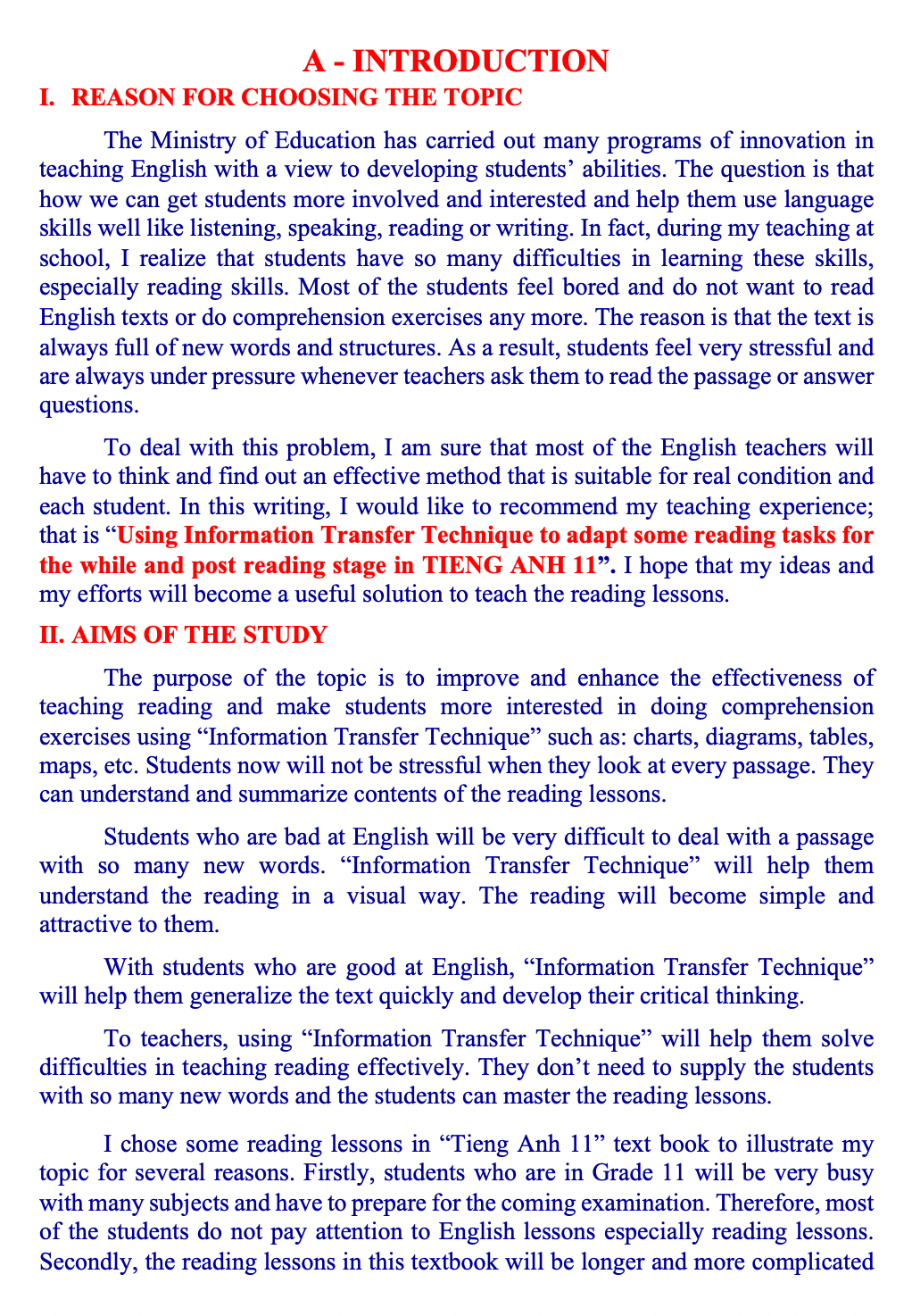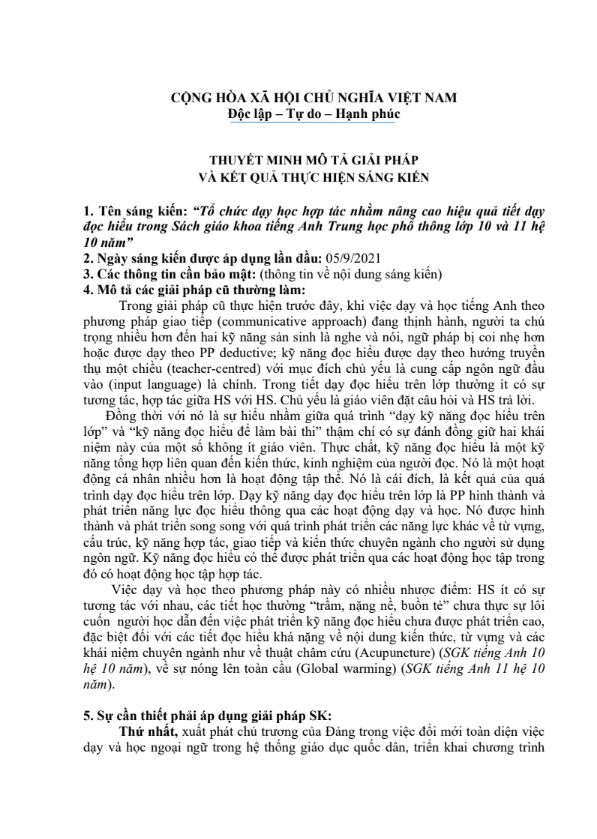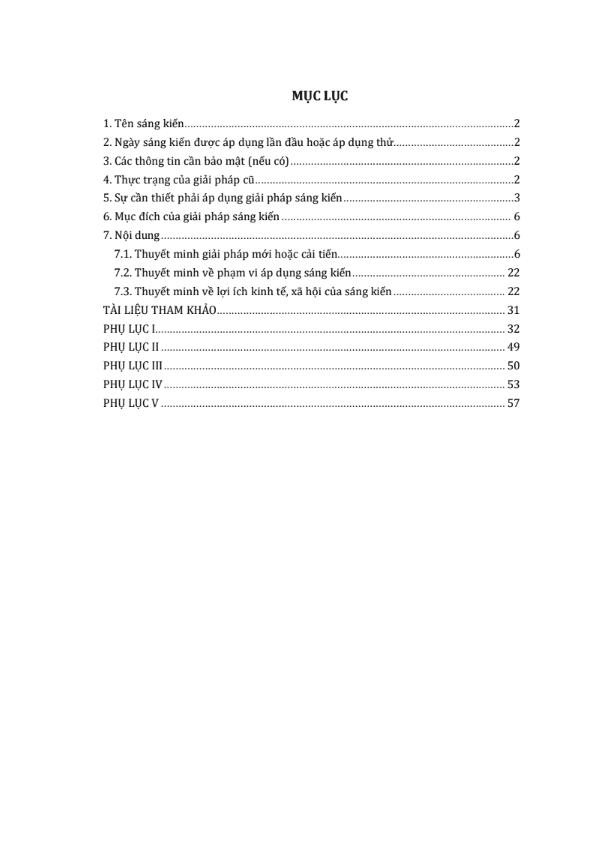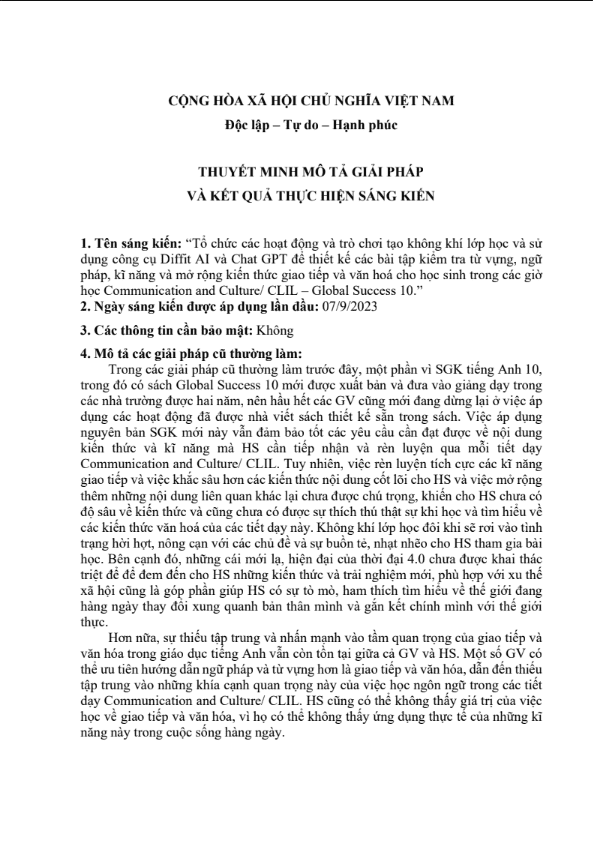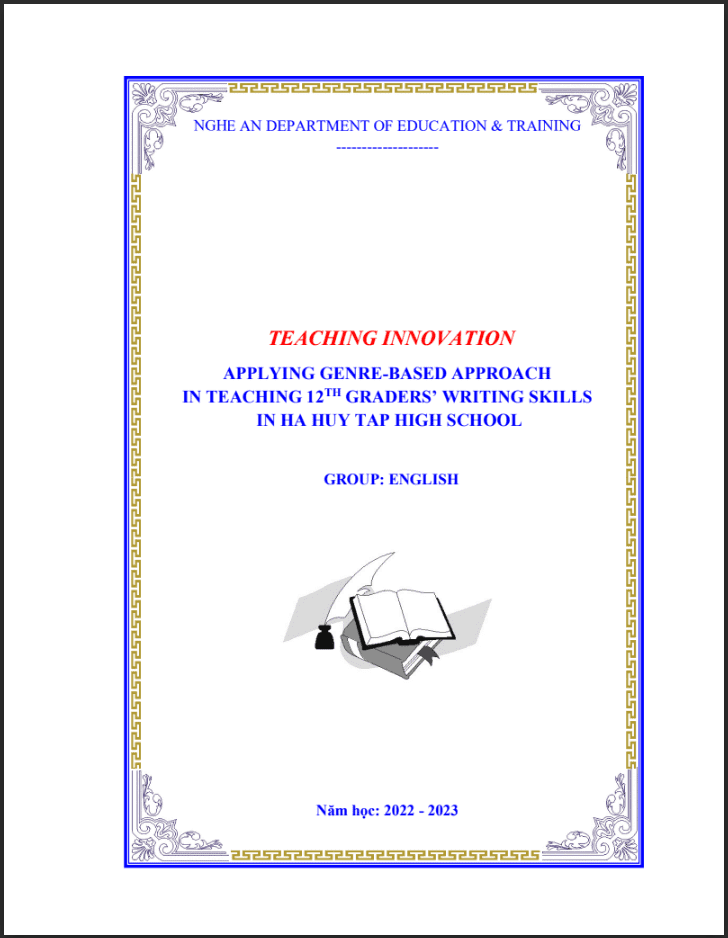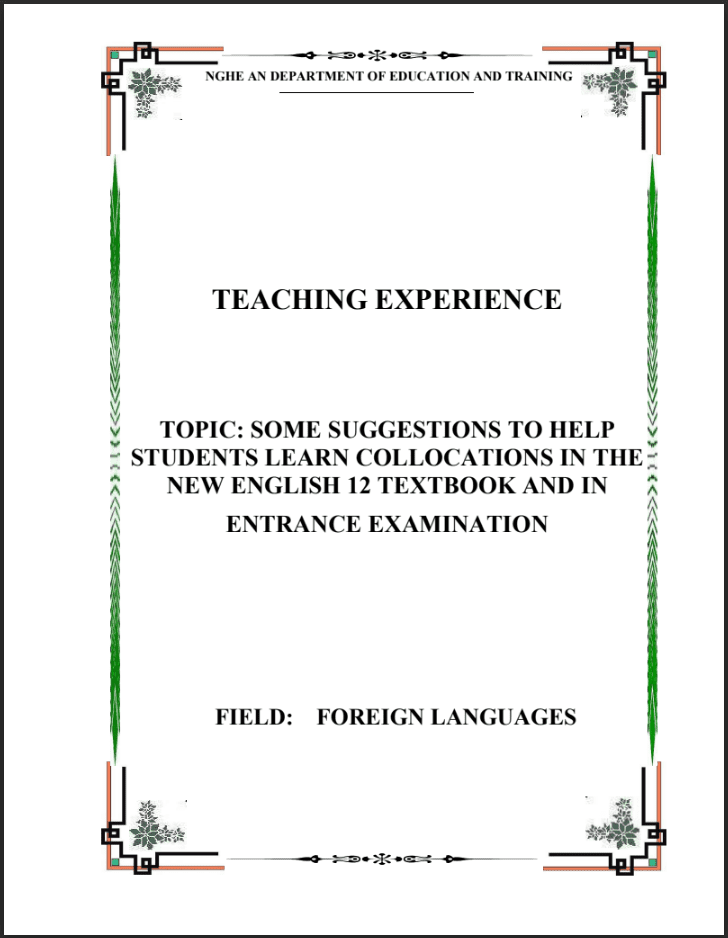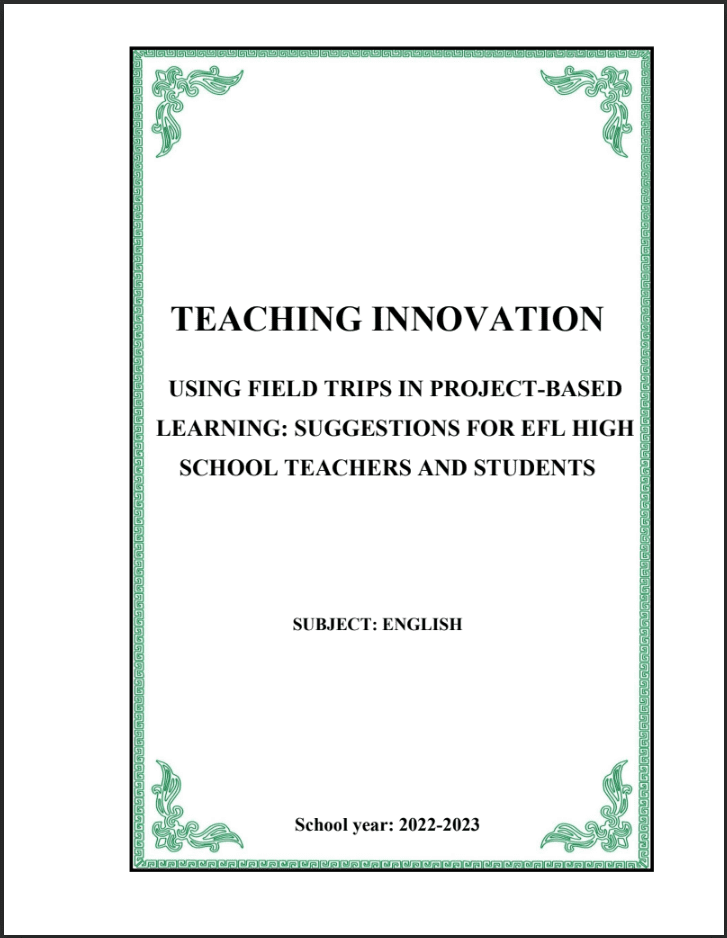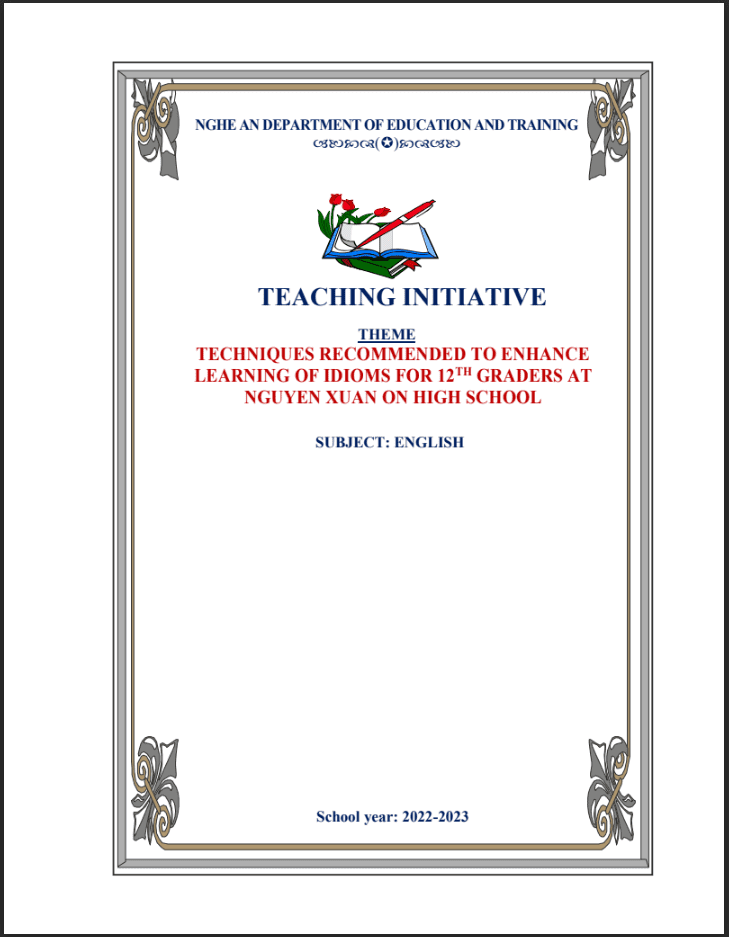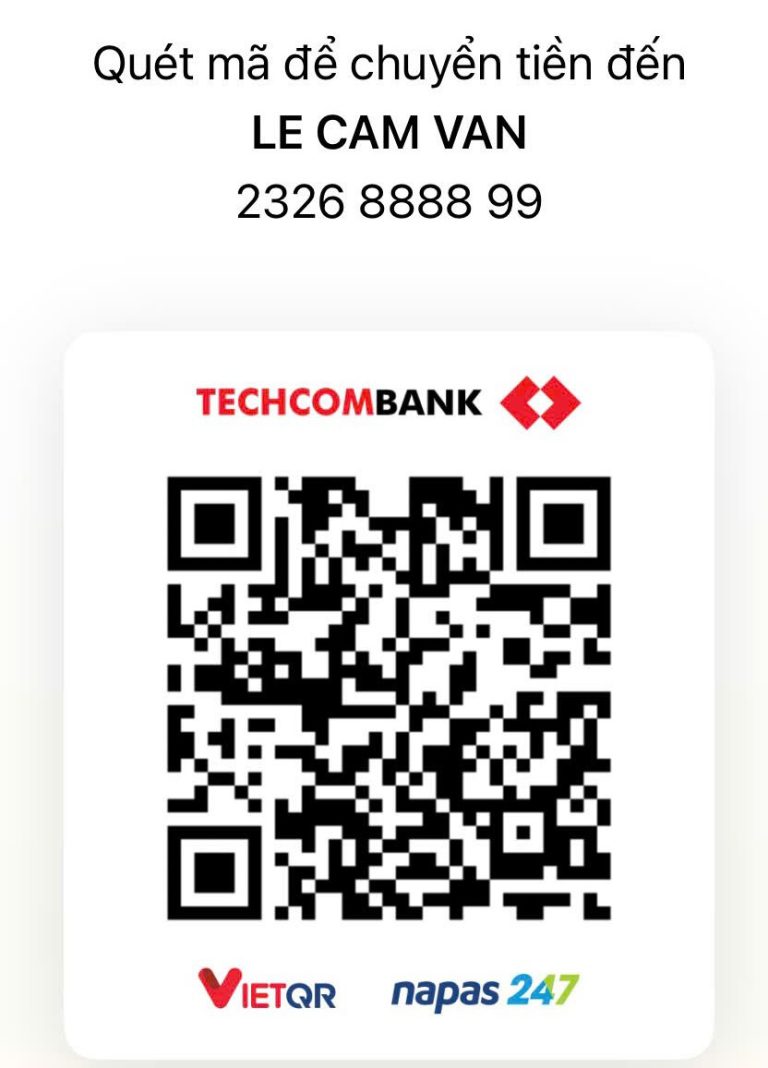SKKN Using Information Transfer Technique to adapt some reading tasks for the while and post reading stage in TIENG ANH 11
- Mã tài liệu: MP0035 Copy
| Môn: | Tiếng anh |
| Lớp: | 11 |
| Bộ sách: | |
| Lượt xem: | 532 |
| Lượt tải: | 7 |
| Số trang: | 32 |
| Tác giả: | Bùi Thị Hòa |
| Trình độ chuyên môn: | Thạc sĩ giáo dục |
| Đơn vị công tác: | THPT Hoàng Mai |
| Năm viết: | 2021-2022 |
| Số trang: | 32 |
| Tác giả: | Bùi Thị Hòa |
| Trình độ chuyên môn: | Thạc sĩ giáo dục |
| Đơn vị công tác: | THPT Hoàng Mai |
| Năm viết: | 2021-2022 |
Sáng kiến kinh nghiệm “SKKN Using Information Transfer Technique to adapt some reading tasks for the while and post reading stage in TIENG ANH 11” triển khai gồm các biện pháp nổi bật sau:
– I have read books, reference books and other problems relating to my topic.
– I have analyzed the result and the difficulties that students encountered
– I have investigated and asked my colleagues’ evaluation and students’ comments.
– I have applied English pedagogical methods
Mô tả sản phẩm
A – INTRODUCTION
- REASON FOR CHOOSING THE TOPIC
The Ministry of Education has carried out many programs of innovation in teaching English with a view to developing students’ abilities. The question is that how we can get students more involved and interested and help them use language skills well like listening, speaking, reading or writing. In fact, during my teaching at school, I realize that students have so many difficulties in learning these skills, especially reading skills. Most of the students feel bored and do not want to read English texts or do comprehension exercises any more. The reason is that the text is always full of new words and structures. As a result, students feel very stressful and are always under pressure whenever teachers ask them to read the passage or answer questions.
To deal with this problem, I am sure that most of the English teachers will have to think and find out an effective method that is suitable for real condition and each student. In this writing, I would like to recommend my teaching experience; that is “Using Information Transfer Technique to adapt some reading tasks for the while and post reading stage in TIENG ANH 11”. I hope that my ideas and my efforts will become a useful solution to teach the reading lessons.
- AIMS OF THE STUDY
The purpose of the topic is to improve and enhance the effectiveness of teaching reading and make students more interested in doing comprehension exercises using “Information Transfer Technique” such as: charts, diagrams, tables, maps, etc. Students now will not be stressful when they look at every passage. They can understand and summarize contents of the reading lessons.
Students who are bad at English will be very difficult to deal with a passage with so many new words. “Information Transfer Technique” will help them understand the reading in a visual way. The reading will become simple and attractive to them.
With students who are good at English, “Information Transfer Technique” will help them generalize the text quickly and develop their critical thinking.
To teachers, using “Information Transfer Technique” will help them solve difficulties in teaching reading effectively. They don’t need to supply the students with so many new words and the students can master the reading lessons.
I chose some reading lessons in “Tieng Anh 11” text book to illustrate my topic for several reasons. Firstly, students who are in Grade 11 will be very busy with many subjects and have to prepare for the coming examination. Therefore, most of the students do not pay attention to English lessons especially reading lessons. Secondly, the reading lessons in this textbook will be longer and more complicated than those they studied in English 10. Moreover, choosing these reading lessons will soon help them improve their critical thinking and develop their reading skills.
III. DUTIES OF THE STUDY
- Study theoretical background of teaching reading using “Information Transfer Technique”
- Study practical background of teaching the reading lessons using “Information Transfer Technique”. Then compare the result before and after adapting.
- Drawing some useful experiences after studying.
- OBJECT OF THE STUDY
The students of the Grade 11 at Phan Dang Luu Upper-secondary school, Yen Thanh District, Nghe An Province.
- METHODS OF THE STUDY
I have finished this topic with the help of my colleagues and my students at my school. I have used these following methods:
- I have read books, reference books and other problems relating to my topic.
- I have analyzed the result and the difficulties that students encountered
- I have investigated and asked my colleagues’ evaluation and students’ comments.
- I have applied English pedagogical methods.
B. CONTENT
- THEORETICAL BACKGROUND
- What is the transfer?
The Oxford Dictionary has explained the term “transfer”: “To transfer
(information / music, ect.) is to “ copy information, music, an idea, ect from one method of recording or presenting it to another” or “ to be recorded or presented in a different way.”
With the definition above we can understand the term “transfer” like this:
with the same information, we have many ways to present it and the procedure of transmitting from one type to another is the transferring.
- What is the Information Transfer technique?
There are several definitions relating to the Information Transfer technique:
According to Stolar (1995, p.5) “Information Transfer technique means translating data from one form to another. We move the Reading or Listening text to graphic stimuli or visual like charts, graphs, diagrams, figures, maps, ect and vice verse”.
With the similar view, David Palmer, (1991, p.79) state that “An Information Transfer is an activity involving the reproduction of information either from a diagrammatic or semi-diagrammatic form into a fully linguistic form or vice verse”.
It can be inferred that the learners are helped in understanding the text by means of a nonverbal device such as a diagram, graph, or table. When simple knowledge is the objective, it can provide assistance in familiarizing students with vocabulary.
- Advantages of using Information Transfer Technique in teaching Reading.
The Information Transfer Technique has many advantages over traditional teaching methods.
First of all, Information Transfer Technique is regarded as a visual kind of information that falls into variety forms such as charts, graphs, maps, diagrams, etc. Therefore, it is much easier for students to understand the details as well as the whole content of the text.
Second, Students can often work together to complete a task, so encourage an open and sharing atmosphere among students of a mixture of talents and personalities. That is to say weak students will have a good opportunity to join in the group work with the help of good students. Therefore, students will become an active language user and an active participant in the given activities while the teacher is a guide and consultant. In addition, The Information Transfer Technique can lead to a learner-centred class where students can learn a foreign language by using it to accomplish different communicative tasks, so successful students’ communicative ability.
Another advantage is that The Information Transfer Technique can help students master the reading passage easier. With most main information of a reading text being transferred into charts, graphs, tables, etc. This technique will be a useful tool for teachers and students to deal with the partial and general content of the text. Also through the activities using information transfer technique, students can improve their ability of generalization and find the process of study a fascinated challenge.
Generally, The Information Transfer Technique with its advantages will bring a new wind into the teaching process. Information Transfer will help make the activities refresher more competitive as well as encourage students’ involvement in the lessons. Students will be excited to join the various, challenging and creative activities and therefore the atmosphere of the class will be more attractive. Then this may lead to a successful reading lesson for teachers.
- Main types of Information Transfer.
According to a specific reading lesson, we can apply one of these following techniques:
- Maps and plans
- Grids and tables
- Diagram and charts
- Diaries and calendars
- Miscellaneous lists, forms, coupons, etc.
In my teaching experience, I mainly use charts, diagrams and tables to design reading activities.
- PRACTICAL BACKGROUND
- The real state of teaching and learning the reading lessons at The
Grade 11 at Phan Dang Luu Upper- Secondary school
The first problem is that students have had trouble doing reading tasks at the while reading stage. That is because most of the students at my school have so few new words and structures, so at this stage, although I provided the students with necessary vocabulary and explained the questions carefully, they still found the reading tasks very difficult and whenever teachers asked them to do the tasks in classes or at home, they usually copied their friends’ answers or used reference books to finish their tasks. Moreover, most of the reading lessons in the Tieng Anh 11 new text book are long and full of new words. This makes the reading tasks more difficult and they should be adapted.
The second problem is that at the post stage, when I asked students to generalize the main idea or the content of the passage, they could not answer and even some other students didn’t understand what they have learnt. Therefore, some activities using the Information Transfer Technique should be designed based on the text to help the students generalize and master the text content easily.
Another one is that doing the repeated tasks every day like answering questions, gap-fill or synonym/antonym makes students feel very bored and loose their enthusiasm in learning reading lessons. Some interesting activities using the Information Transfer Technique should be designed as new tasks to make the reading lessons more attractive to change the atmosphere and to get the students involved in the lessons.
- Adapting some activities for the while and post reading stage by completing the chart and reconstructing the text orally for each lesson in “Tieng Anh 11 new ” using The Information Transfer Technique (From Unit 1 to Unit 10).
TÀI LIỆU LIÊN QUAN
- 7
- 105
- 1
- [product_views]
- 5
- 173
- 2
- [product_views]
- 4
- 165
- 3
- [product_views]
- 4
- 129
- 4
- [product_views]
100.000 ₫
- 6
- 434
- 5
- [product_views]
100.000 ₫
- 2
- 507
- 6
- [product_views]
100.000 ₫
- 9
- 546
- 7
- [product_views]
100.000 ₫
- 4
- 409
- 8
- [product_views]
100.000 ₫
- 2
- 595
- 9
- [product_views]
100.000 ₫
- 0
- 538
- 10
- [product_views]

